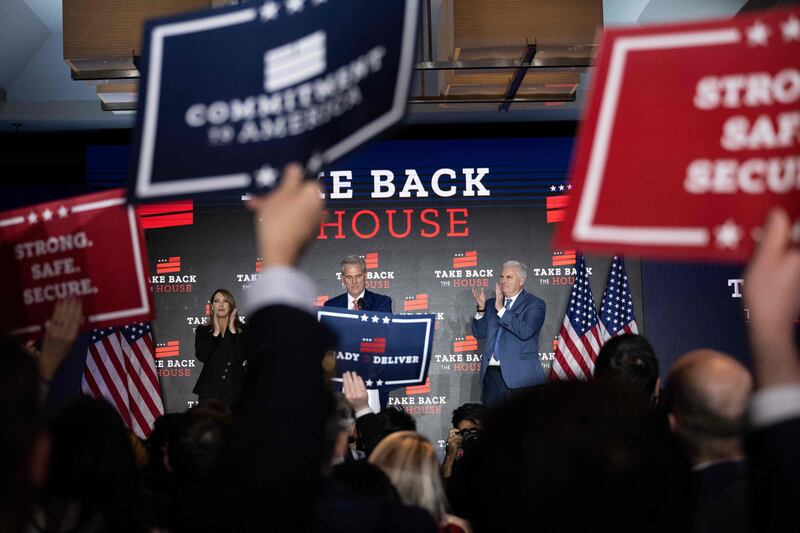Oscillations of power are baked into America’s political system. A country with an executive branch and bicameral legislature shared between only two major political parties seems almost destined for perpetual political swings.
History can attest to this. Out of the 82 sessions of Congress that America has seen since 1857, only 47 – a little more than half – have seen a unified government, in which the House of Representatives, the Senate and the presidency are all controlled by the same party. And these periods of unity have themselves been apportioned roughly evenly – the Democrats have had 22 unified governments, and the Republicans 25.
It may be best to view modern American political history not as chapters of Democratic or Republican control, but rather as periods of unity or division. The past 30 years, in which 10 out of 16 governments have been split between parties, have most certainly been a time of division. With the results of the US midterm elections, which concluded on Wednesday, more or less solidified, it has become clear that the 117th session of Congress will see this trend continue. The Republicans have gained firm control of the House, ensuring that Democratic President Joe Biden’s next two years in office will be a perpetual headache.
That is not to say that nothing has changed. Transfers of power are normal in America, but the way in which they are being carried out and received by the public in recent elections is not. Ahead of this year’s midterms, authorities across the US warned of potential violence, particularly from some supporters of the far right who may refuse to accept any result that does not go their way. A violent break-in at the California home of House Speaker Nancy Pelosi last month gave weight to these concerns. Mrs Pelosi was not home at the time, but her husband was briefly held captive by a man who clearly had political grievances.

It is difficult to pinpoint the exact moment of origin of the conspiratorial mindset that has taken hold and given new shape to American political divisions. Some point to the famous Republican firebrand Sarah Palin’s entry into the 2008 presidential and vice-presidential election, whereas others go as far back as Bill Clinton’s impeachment in 1998. But while the location of the wellspring may be mysterious, the taste in the water that flows today is unambiguously unpleasant. That much was clear when on Tuesday, Mr Biden’s Republican predecessor Donald Trump, who has backed several candidates in the midterms, hinted to a cheering crowd that he would expose harmful information about Ron DeSantis – the freshly re-elected, rising-star Republican Governor of Florida – if he might ever become so bold as to aspire for the presidency.
There are still plenty of signs that most voters remain unpersuaded by extreme personalities and rhetoric, and this is cause for cautious optimism for anyone watching America from afar. The governing class in both parties is also set to become more diverse, racially and in terms of age, but also ideologically – a direct counter to the frequent pressure for conformity that has swept Democrats and Republicans alike.
American leadership – at home and abroad – relies on party leaders and Mr Biden doing something that their country was once known for but is now becoming increasingly difficult: summoning unity from diversity and finding strength even in division. With the world in the throes of an economic downturn and continued armed conflict in many places, American leadership matters, and few will have the patience to watch Washington’s parties fail to come together to realise it.





